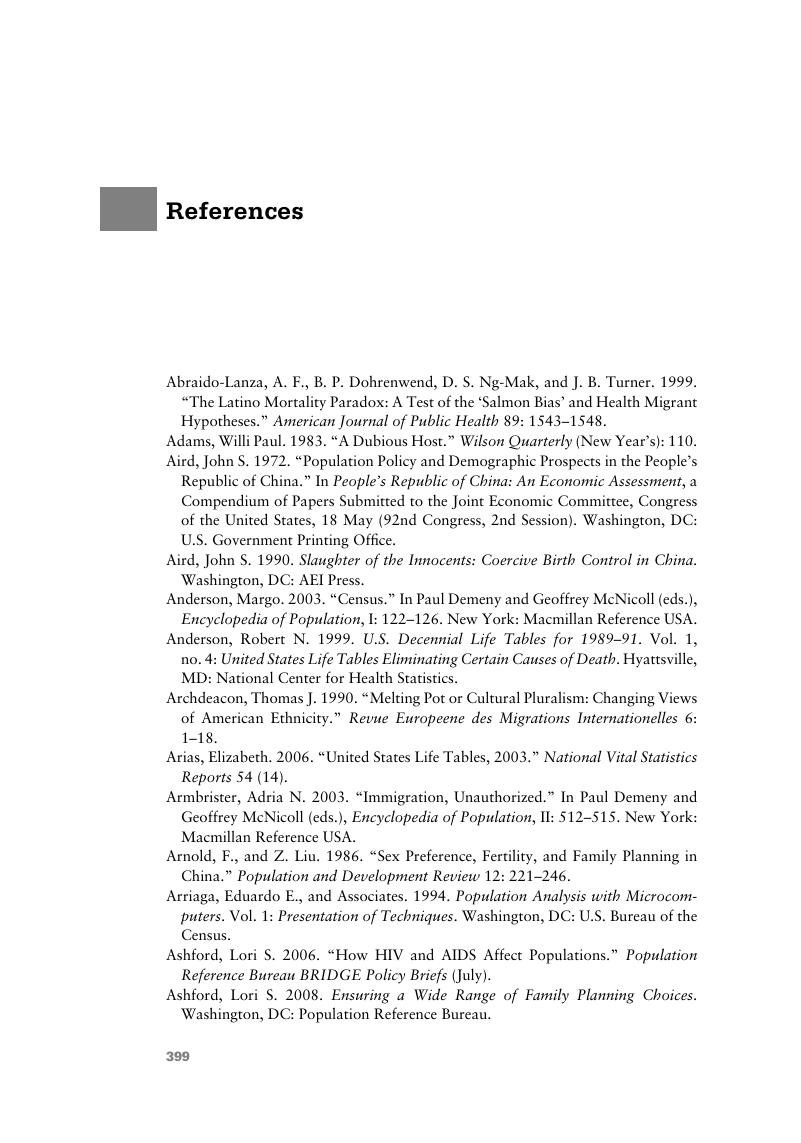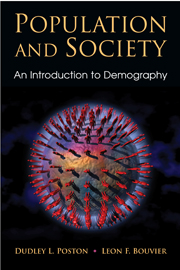Book contents
- Frontmatter
- Contents
- Preface
- Introduction
- 1 “We Are All Population Actors”: An Introduction to Demography
- 2 The Sources of Demographic Information
- 3 Fertility
- 4 Contraception and Birth Control
- 5 Mortality
- 6 Internal Migration
- 7 International Migration
- 8 Age and Sex Composition
- 9 World Population Change over Time
- 10 Population Change in the United States
- 11 Population Distribution
- 12 Cultural Adaptation and Growth
- 13 Population Policy
- 14 The Future of Planet Earth
- Glossary
- References
- Author Index
- Subject Index
- References
References
- Frontmatter
- Contents
- Preface
- Introduction
- 1 “We Are All Population Actors”: An Introduction to Demography
- 2 The Sources of Demographic Information
- 3 Fertility
- 4 Contraception and Birth Control
- 5 Mortality
- 6 Internal Migration
- 7 International Migration
- 8 Age and Sex Composition
- 9 World Population Change over Time
- 10 Population Change in the United States
- 11 Population Distribution
- 12 Cultural Adaptation and Growth
- 13 Population Policy
- 14 The Future of Planet Earth
- Glossary
- References
- Author Index
- Subject Index
- References
Summary

- Type
- Chapter
- Information
- Population and SocietyAn Introduction to Demography, pp. 399 - 434Publisher: Cambridge University PressPrint publication year: 2010

